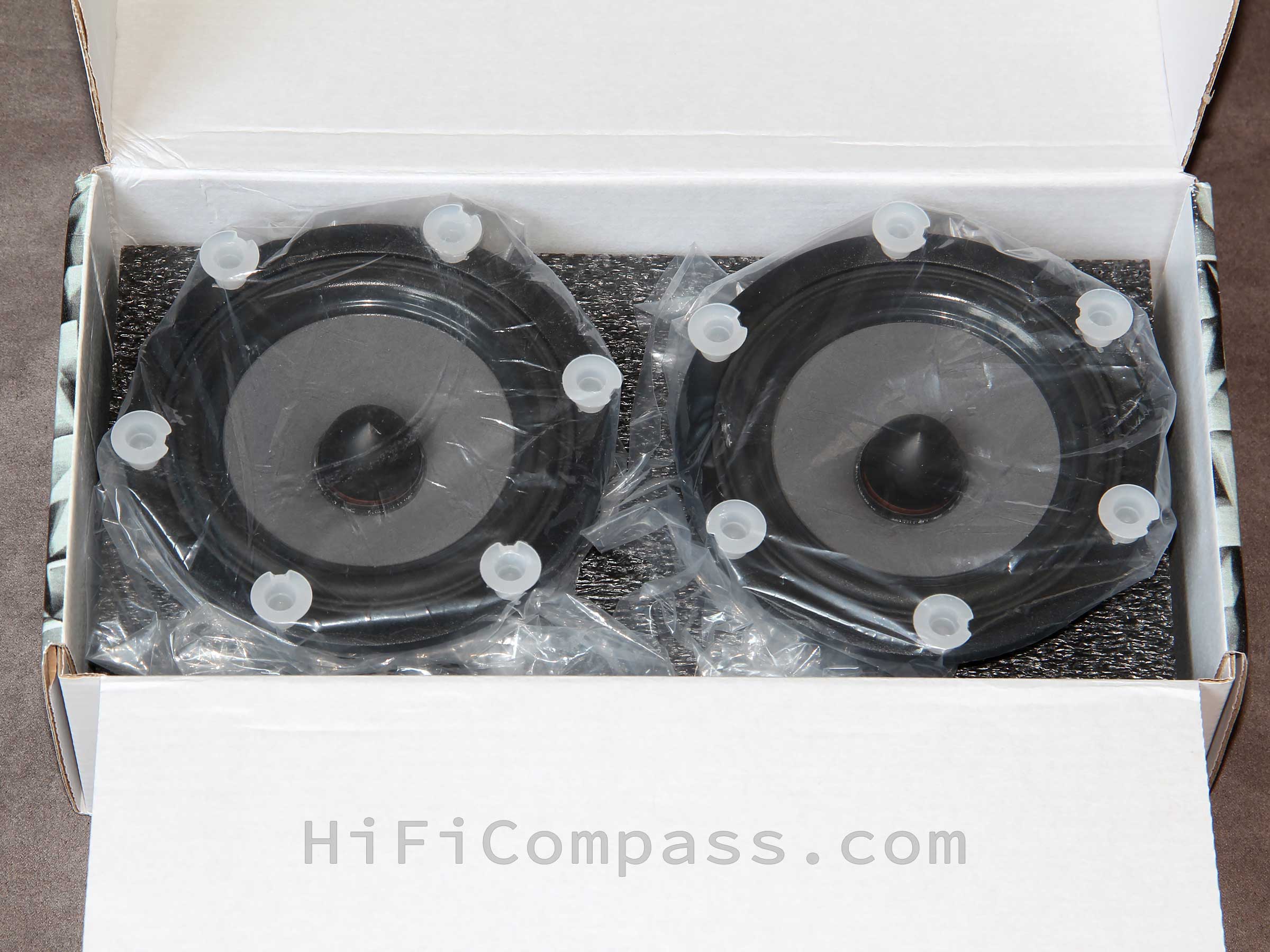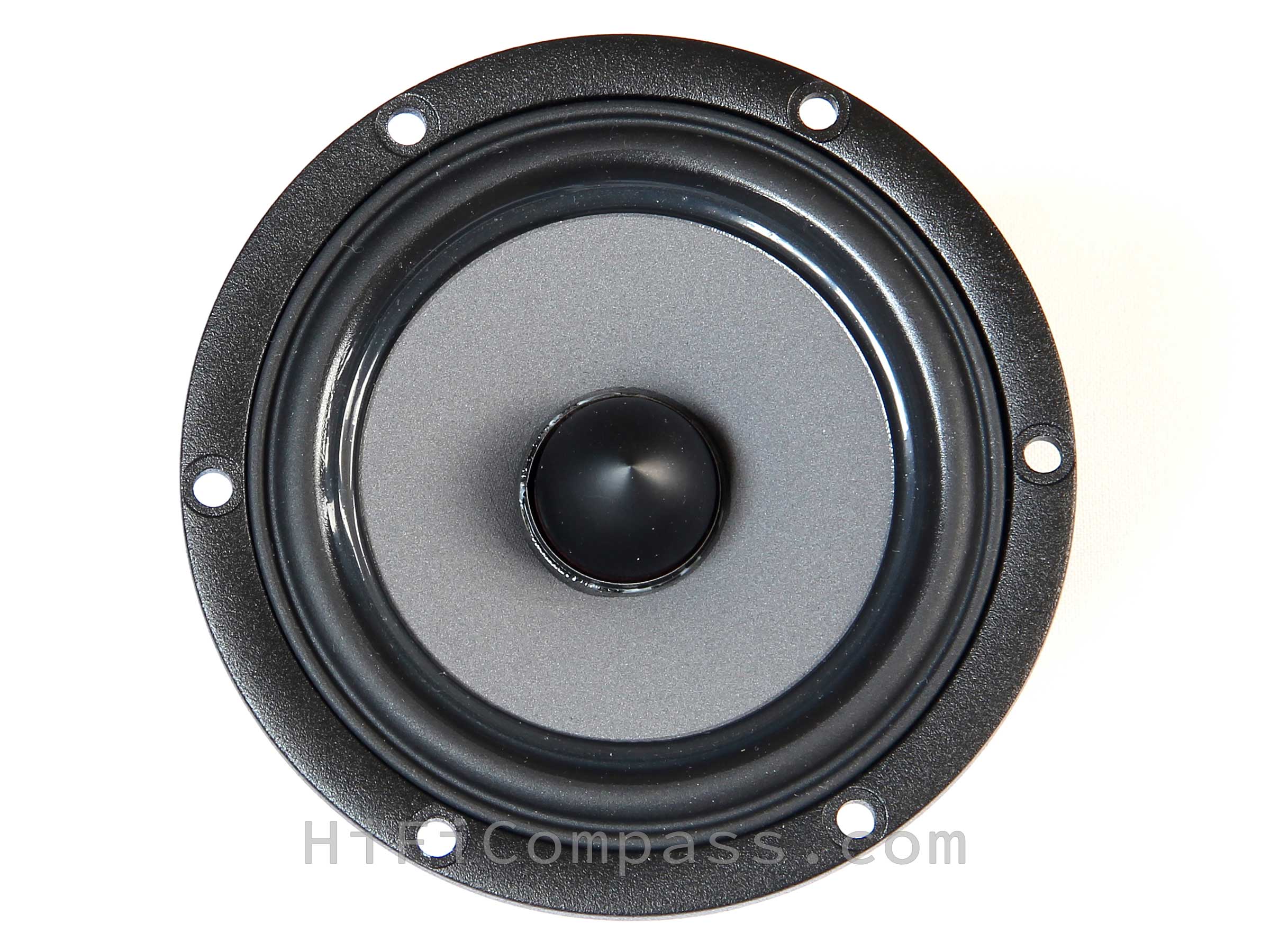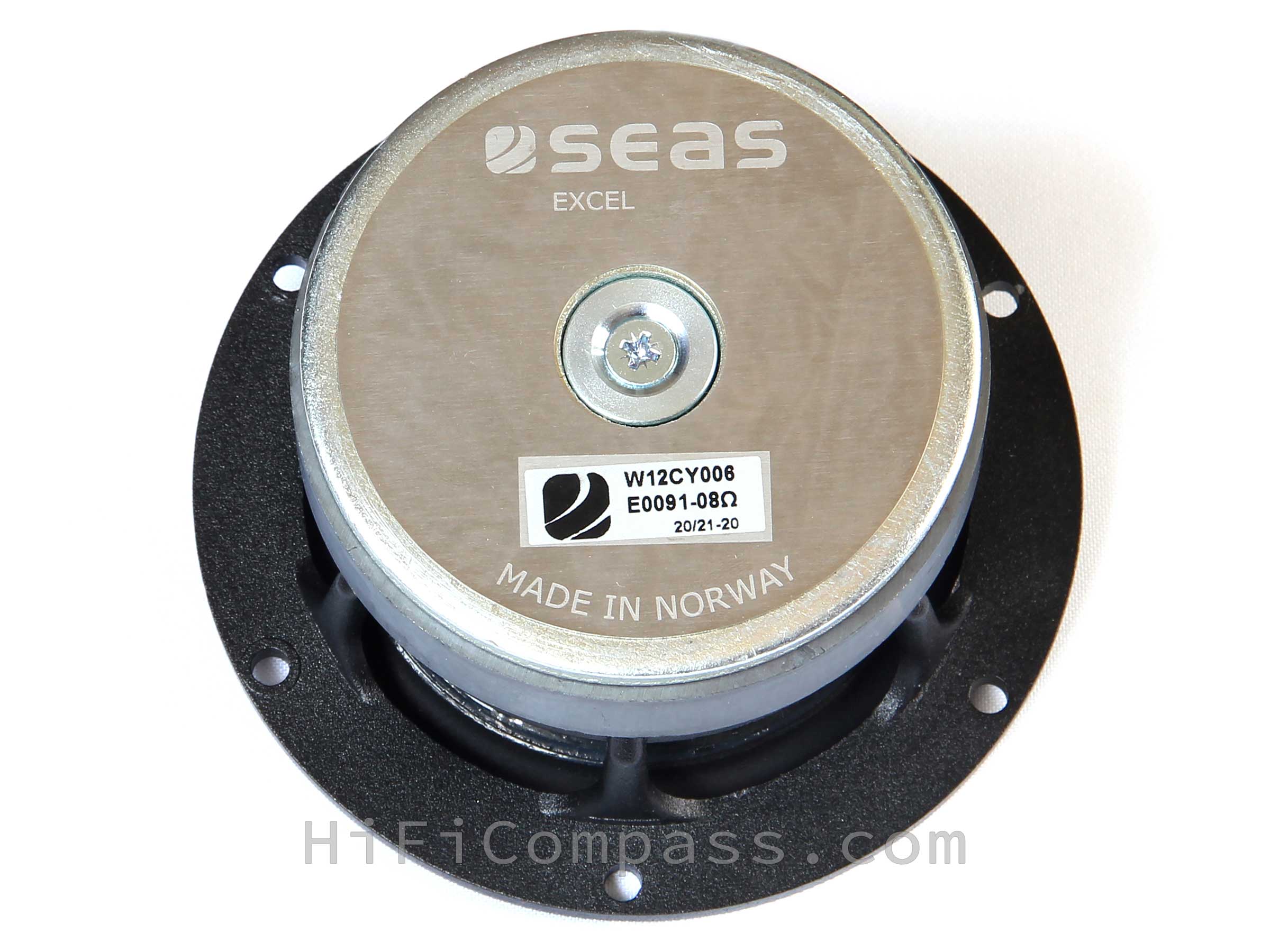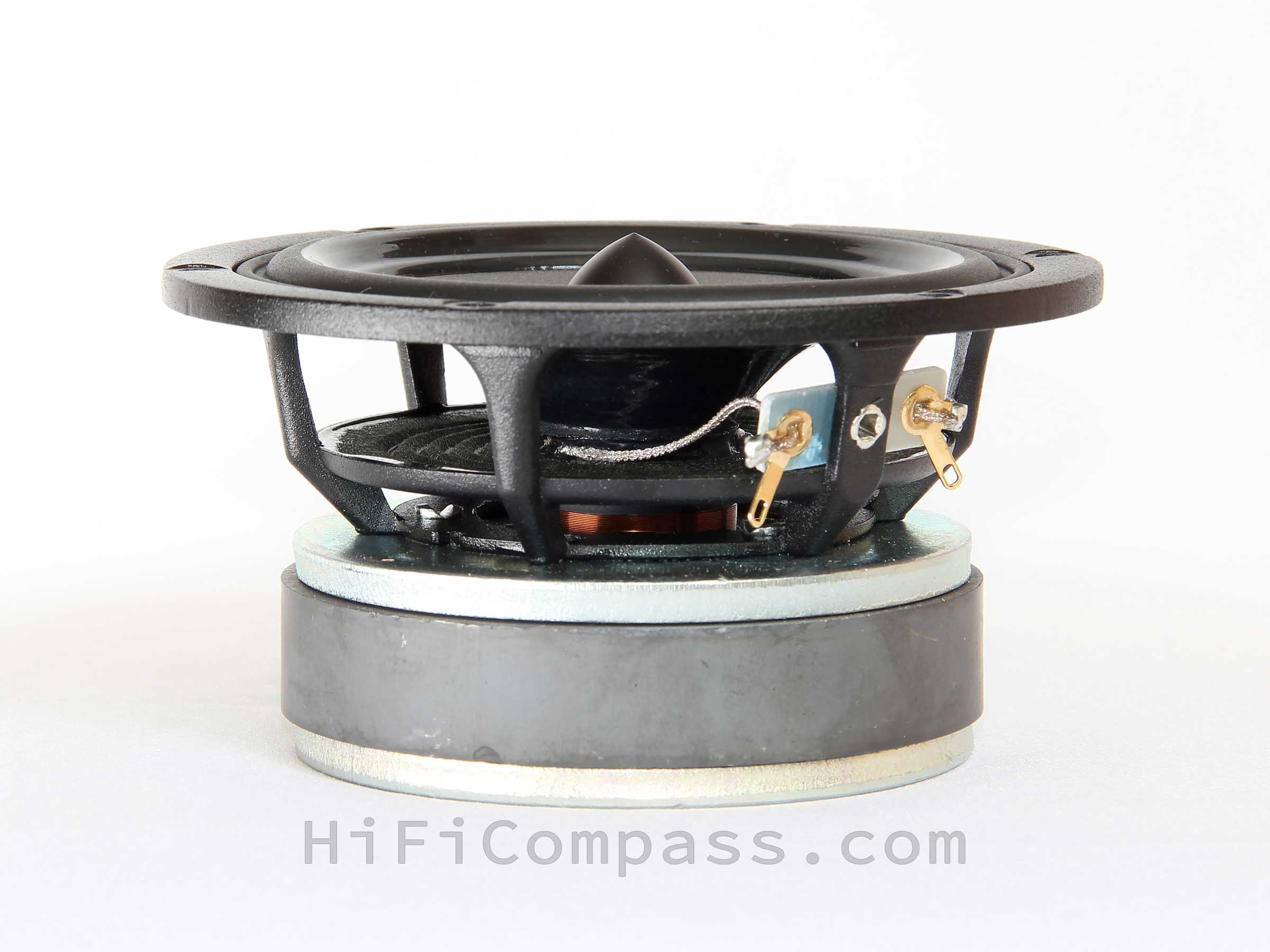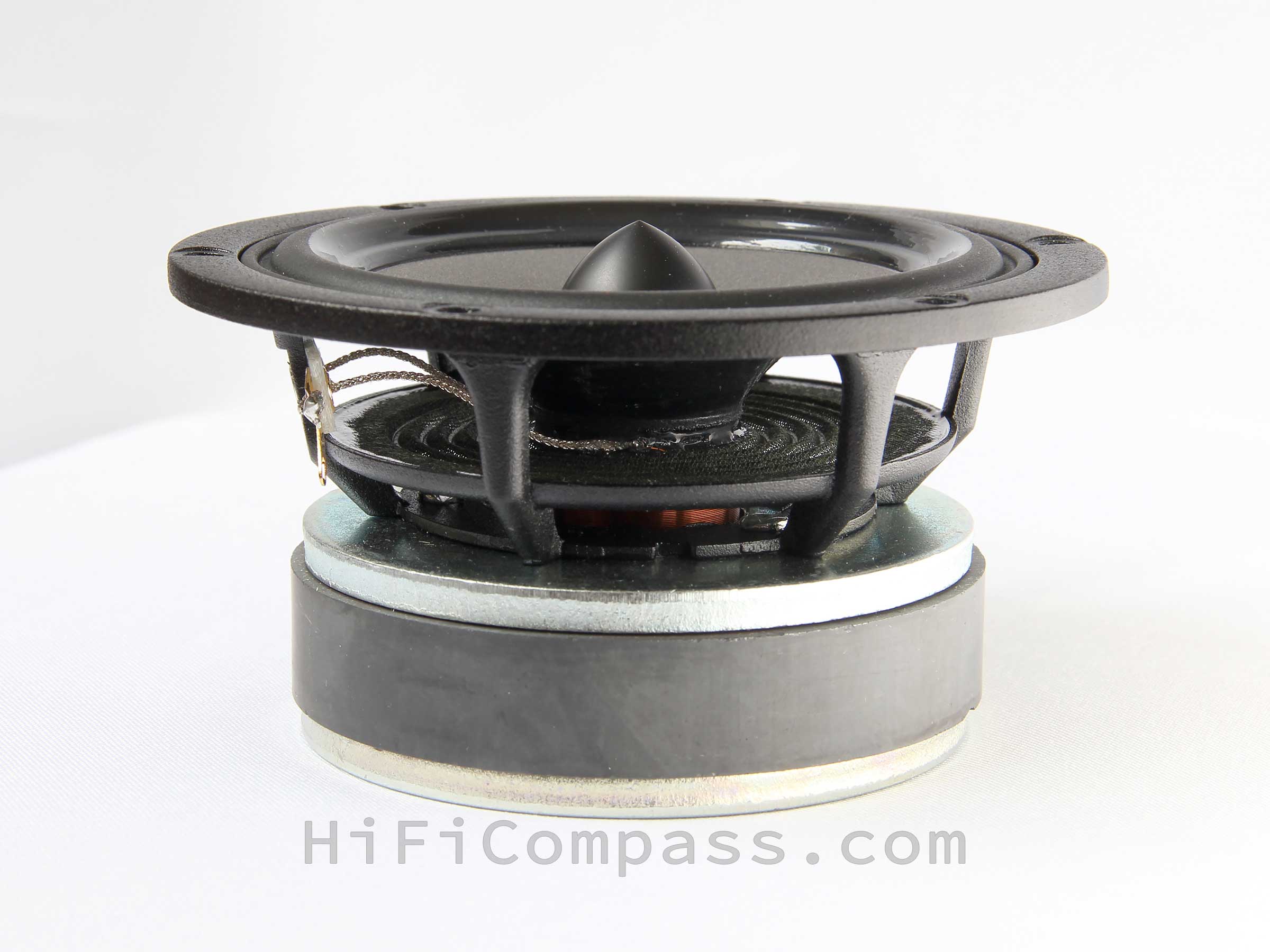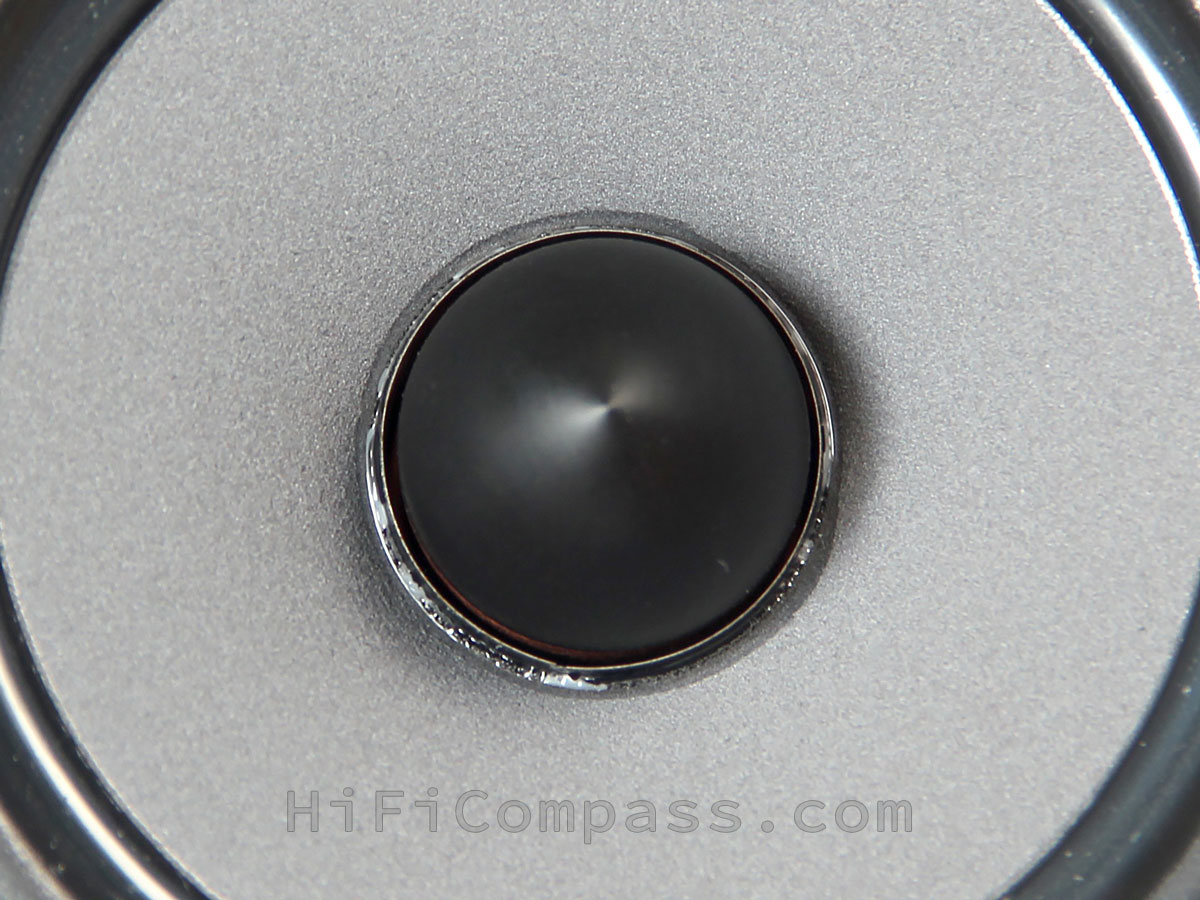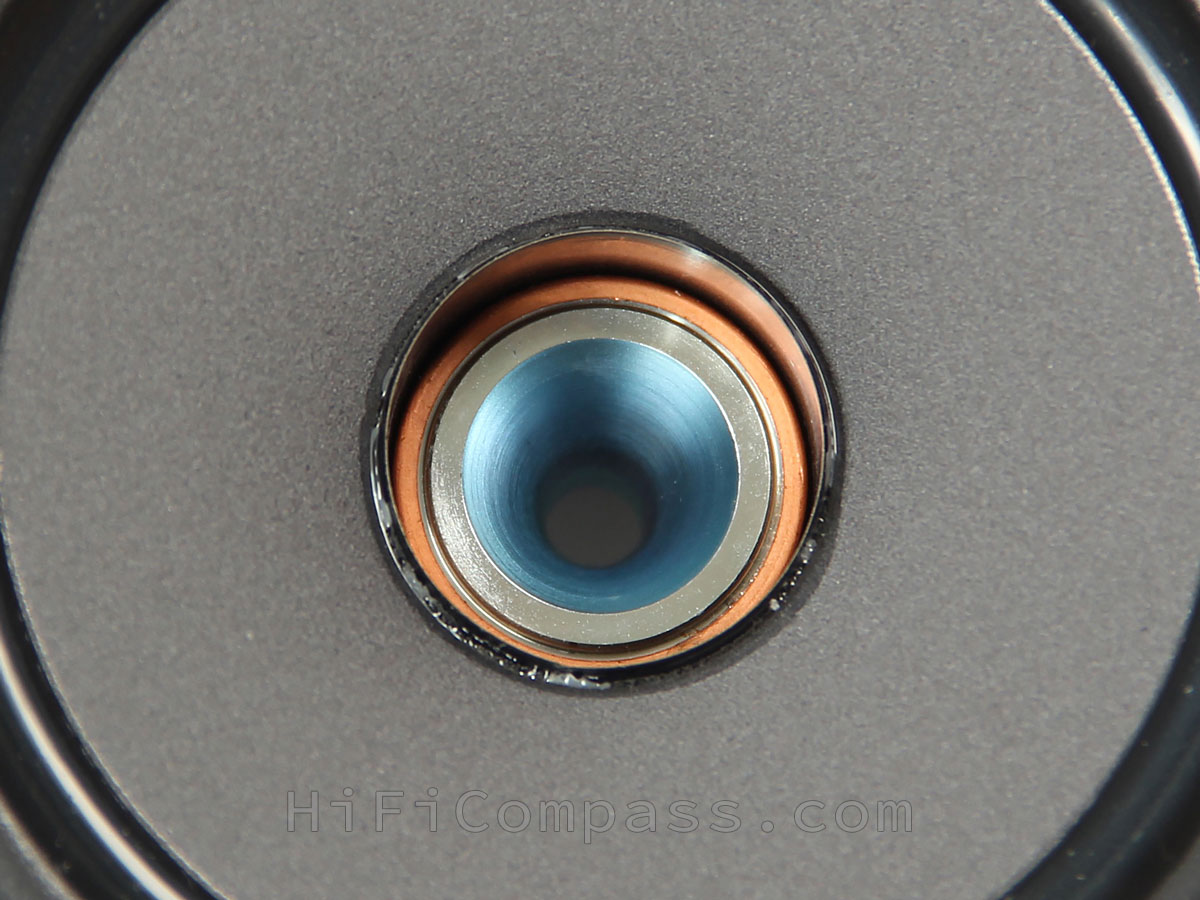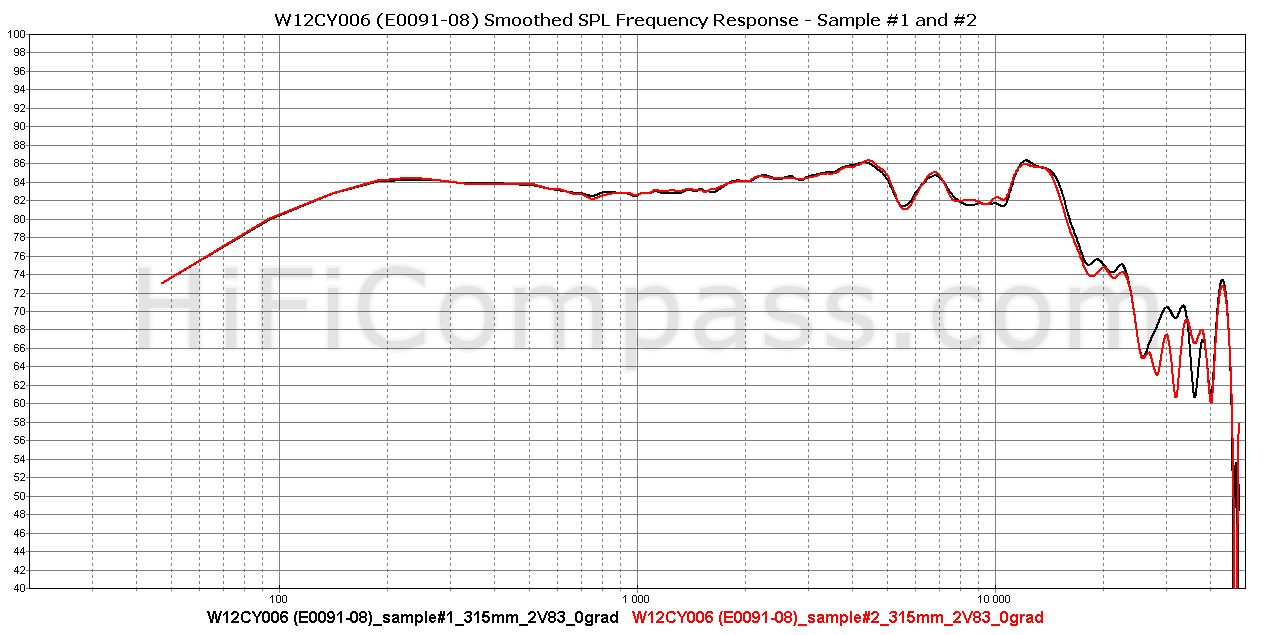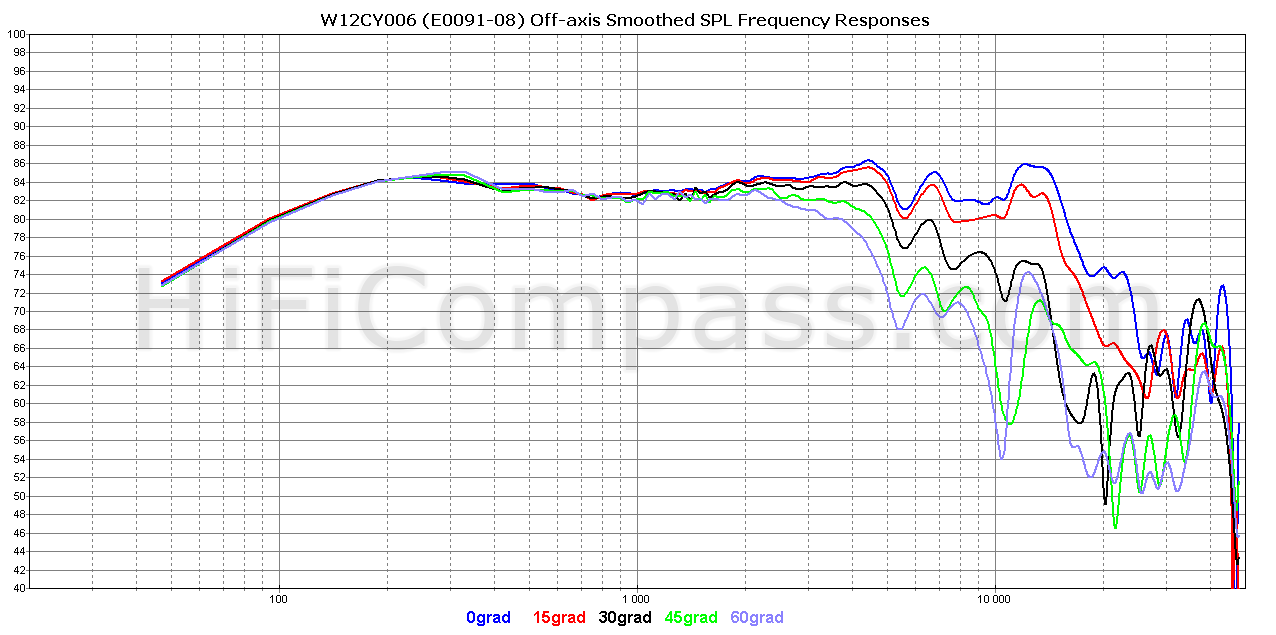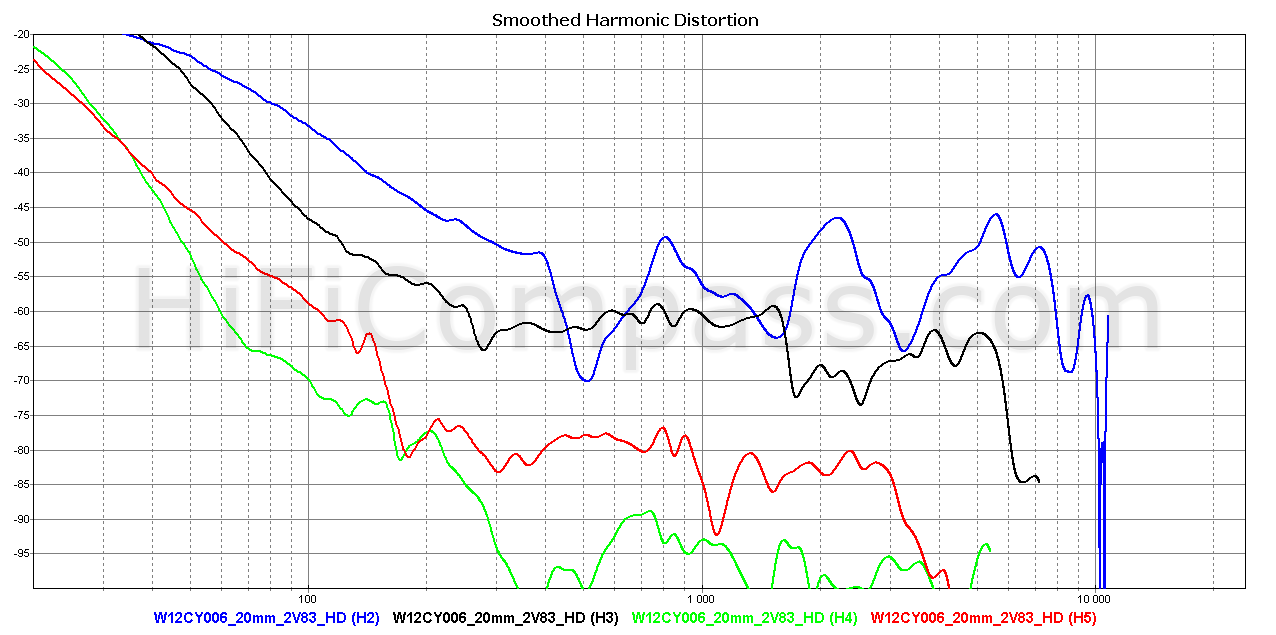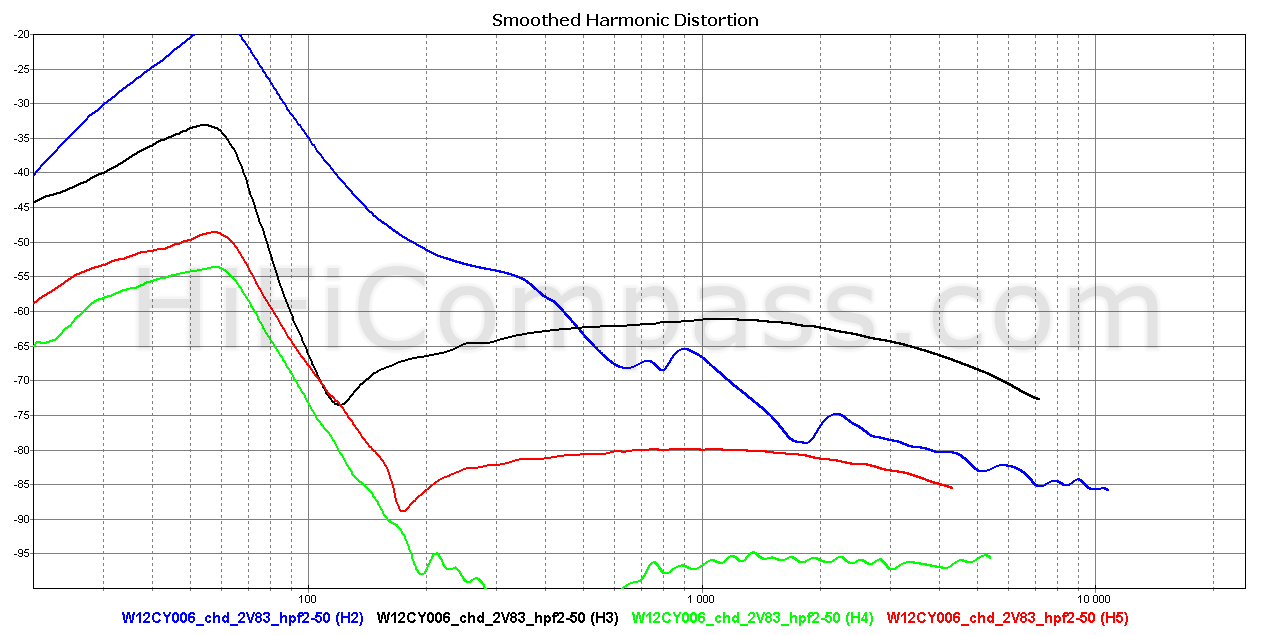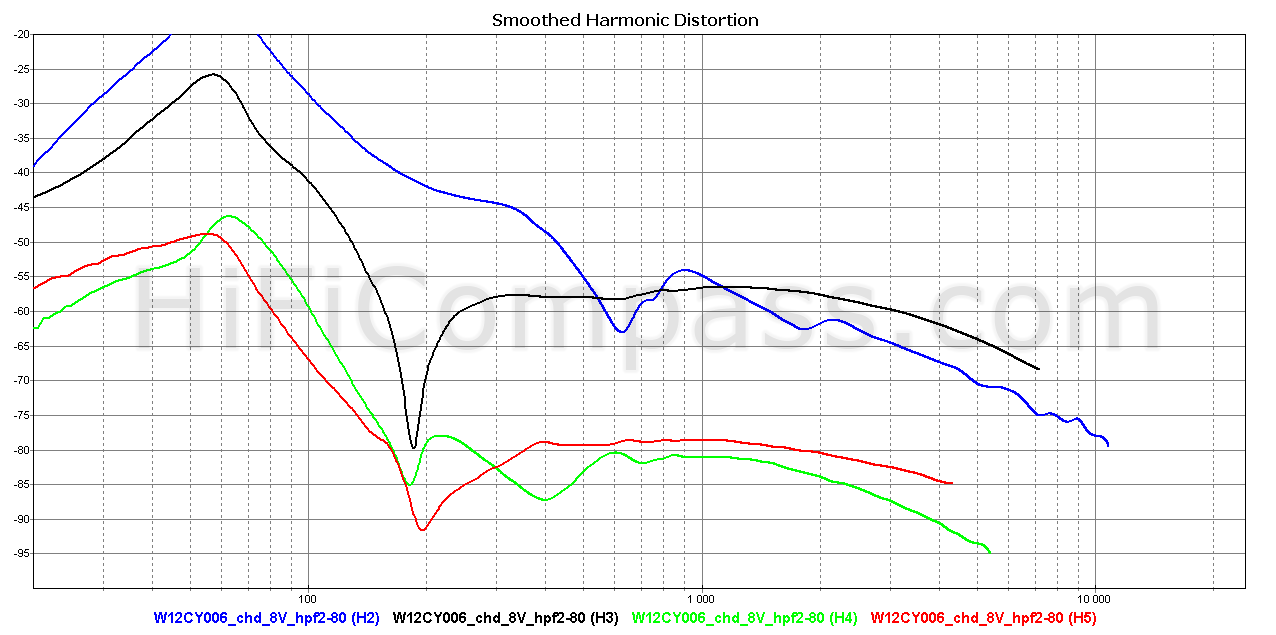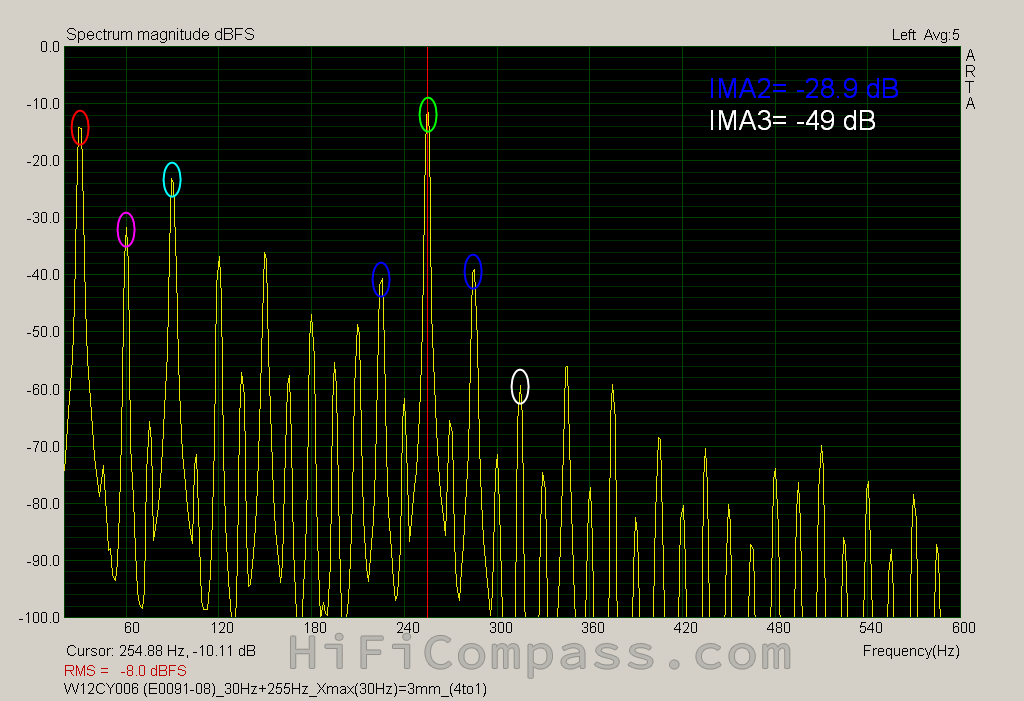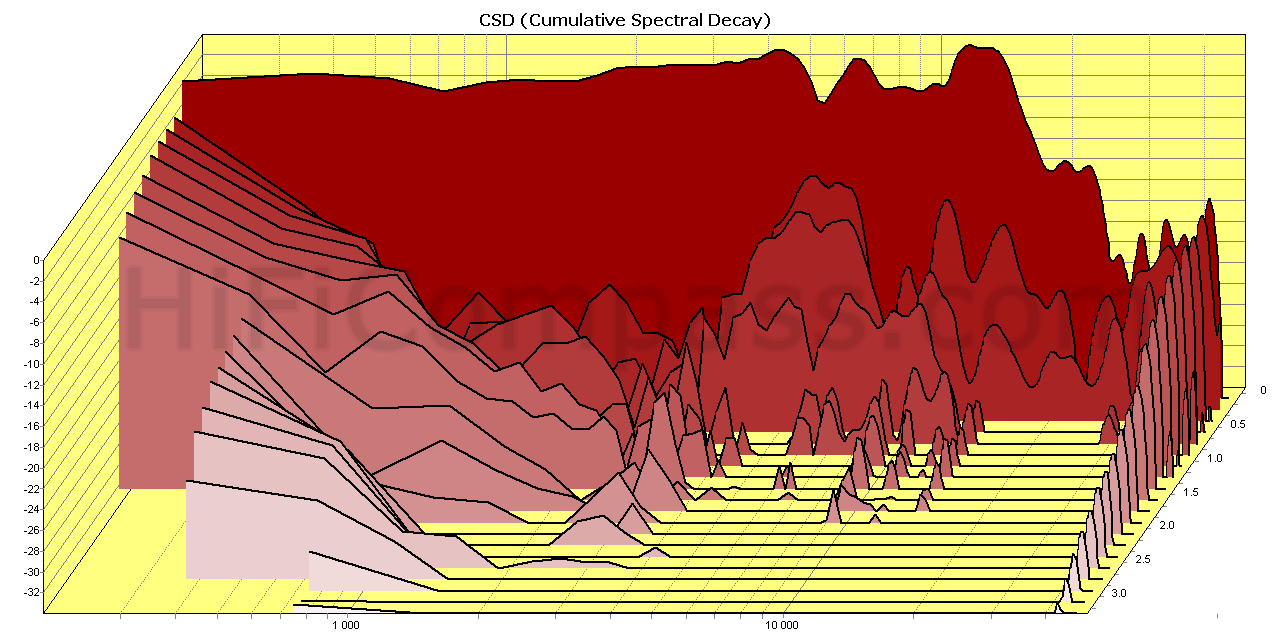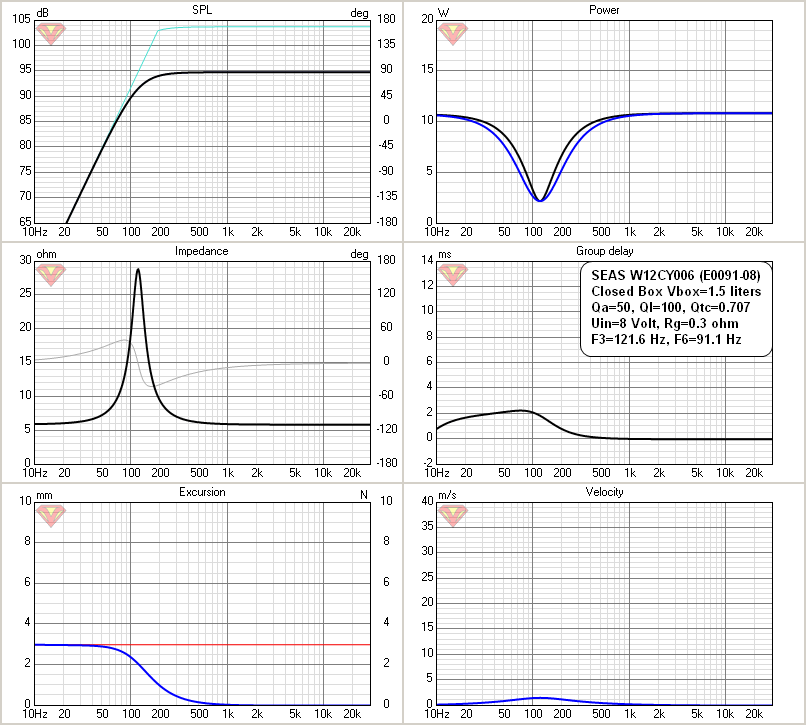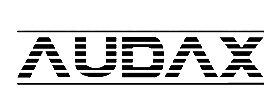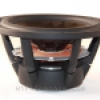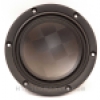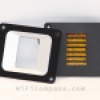HiFiCompass
Seas Excel 4" W12CY006 (E0091-08) midwoofer review
What is on the test bench?
We continue our introduction to SEAS's newest Excel Nextel speakers, started with reviewing of the 6" NEXTEL coated paper cone midwoofer W18NX003 (E0096-08). Before further reading I strongly recommend that you read the previous review for a better understanding of technical features and the conjuncture within the audio industry.
In December 2020 renowned Danish loudspeakers designer Troels Gravesen published the first short review of this model.
You can read about the history of SEAS here
Why do we test this?
SEAS has kindly provided a couple of its newest models for independent testing:
6" midwoofer W18NX003 (E0096-08)
4" midwoofer W12CY006 (E0091-08)
I would like to express my deep gratitude to SEAS company and personally to Olav Mellum Arntzen (Managing Director of SEAS) and Claus Futtrup (Chief Techical Officer of the SEAS Sales & Marketing Department), as well as Andrey Romanov (Owner and CEO of FINSTOR Oy - www.audio-hi.fi) for their assistance in the implementation of this series of reviews.
What did the manufacturer state?
Of the parameters, I note a rather modest linear excursion by today's standards - only 3 mm in one direction.
Compared to the predecessor W12CY003 (E0044-08S):
- the voice coil inductance has decreased from 0.41 mH to 0.27 mH, which is very good
- the resonant frequency Fs has increased from 60 to 72 Hz. I don't even know what to say, is this good or bad, but I would prefer to deal with a lower resonant frequency. It's strange, but the recommended frequency range has extended from 60 to 50 Hz ...
- for some reason Qms has decreased from Qms = 2.3 to 2.2 and this despite the fact that Fs has increased
- mechanical losses have increased from Rms=1.03 kg/s to 1.42 kg/s
- the moving mass has increased from Mms=6.1 g to 6.9 g
- the suspension complience has decreased from Cms=1.2 mm/N to 0.71 mm/N
- the sensitivity has decreased by 0.5 dB
- the long term power handling has increased from 70 to 90 W
As a matter of fact, apart from the reduced voice coil inductance, which is usually a sign of a good motor, and increased power handling, the new parameters are not very exciting.
Visual inspection
The midwoofers W12CY006 (E0091-08) are supplied in a matched pair in a reliable corrugated cardboard box with prints and logos of a corporate style. Inside the box the speakers sit firmly in the pockets of foam polyethylene. The plastic spacers in the basket mounting holes protect the speaker surrounds from unwanted contact with the package and squeezing.
-
The production quality is just perfect on the front side, there is nothing to complain about. The perfect alignment of the pole piece "bullet" (phase plug) inside the voice coil former, the gap between the surround and the basket rim is as minimal and uniform as possible.On the back side everything is perfect too. There is the complete absence of any cosmetic defects, burrs, chips and a glue traces. Perfect alignment of the magnets and good alignment of the glued labels.
- The cone is made of cellulose and covered with NEXTEL painting on the front side, and with a soft transparent damping compound on the back side. When tapped with a finger, the cone responds with the pleasant sound of well-damped paper. The color of the new coating is also a bit lighter than previous designs and it now matches the color of the latest SEAS Excel Graphene products, allowing designers to combine paper and magnesium cone drivers in one loudspeaker.
NEXTEL is a truly unique coating (the NEXTEL trademark belongs to the German company Mankiewicz Gebr. & Co. (GmbH & Co. KG)). It creates the feeling of a suide-like surface and is created with special patented pigments of various grains. These pigments increase the surface and create a texture that feels velvety or suede. The combination of colored pigments results in the typical NEXTEL effect of salt and pepper. Due to their size, the pigments are individually visible and give typical NEXTEL colors. In addition, the uneven surface structure results in diffuse light scattering, resulting in a very matte surface that absorbs up to 98% of the incident light.
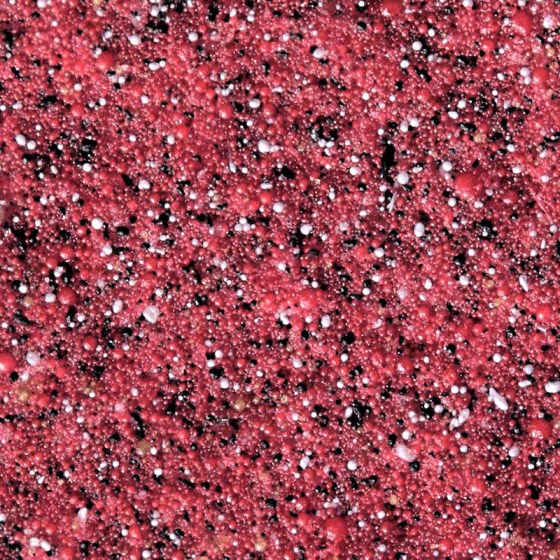

- The basket is made of aluminum alloy and coated with a very durable micro-textured powder coating. The 5.4 mm thick solid mounting flange is held on narrow but solid and strong spokes. Thanks to the huge "windows" between the spokes, the basket is acoustically very transparent, and when you tap it with your finger, it immediately becomes clear that it is absolutely inert. The basket is attached to the top plate of the magnetic system with rivets. Unfortunately, there is no foam gasket on the basket flange and it is also missing from the delivery set. A trifle, of course, but useful and for such a status product there is no sense to save on it.
- The top and bottom plates of the magnetic system are made by conventional stamping. The back plate has a luxury brushed and anodized metal label with a model name sticker and the company logo engraved on it.
- The pole piece "bullet" made of aluminium by turning and has high-quality matte black anodizing. The bullet is fixed with a screw that runs through the pole piece. It can be detached without difficulty and we get access to the heart of the speaker motor. The speaker design with a phase plug has some pros and cons compare to the design with dust cap:
+ phase plug reduces compression due to temperature variations in the voice coil
+ phase plug increases long term power handling capacity
+ phase plug eliminates resonances in the cavity inside the voice coil former
- phase plug "steals" useful cone radiation area
- such a design reduces the tightness of the loudspeaker enclosure, but this effect can be neglected - The pole piece has a conical recess inside. It is one of the key elements of the magnetic system and is made by turning, as evidenced by clearly visible cutter marks on its surface. There is a copper sleeve around the pole piece and an additional very massive tall copper ring is installed on top of the pole. Now it becomes clear that we are not dealing with a primitive motor, but really a product of modern engineering. Measurements will show how effective these measures are.
- The magnet is an ordinary ferrite one.
- The classical half-roll surround is made of rubber. The edge of surround back side, where it is glued to the cone, is covered by damping compound about of 5 mm width along its circumference. The compound is the same as on the back of the cone. Apparently, this coating determines the essence of the adaptive surround.
- The four-wave spider is made of black fabric with a greenish tint with the addition of long reinforcing synthetic microfibers. They serve both to ensure long-term stability of the spider parameters and for its damping.
- The voice coil is two-layer, overhang type, wound with copper clad aluminum wire to reduce the moving mass.
- The voice coil former is made of titanium and has no ventilation holes, since in such a design, without a dust cap, and with a "bullet" on the pole piece, there is simply no need to equalize the excess pressure formed under the cap. This is one of the advantages of "bullet" designs.
- The silver lead wires are quite soft and connected to a simple terminal block on a fiberglass base. The rigidity of the terminal block and contacts could be higher. You need to be careful when connecting the terminals.
-
The new model has gotten rid of a fancy rubber "boot" on the magnetic system, which was an indispensable attribute of previous models. The question arises - did it perform any useful function at all in previous models, or was it just a design element?
So, the visual inspection suggests that we are dealing with a high-end midwoofer in a classic design, but in which a modern "advanced" motor is hidden. The production quality is excellent.
Impedance frequency response
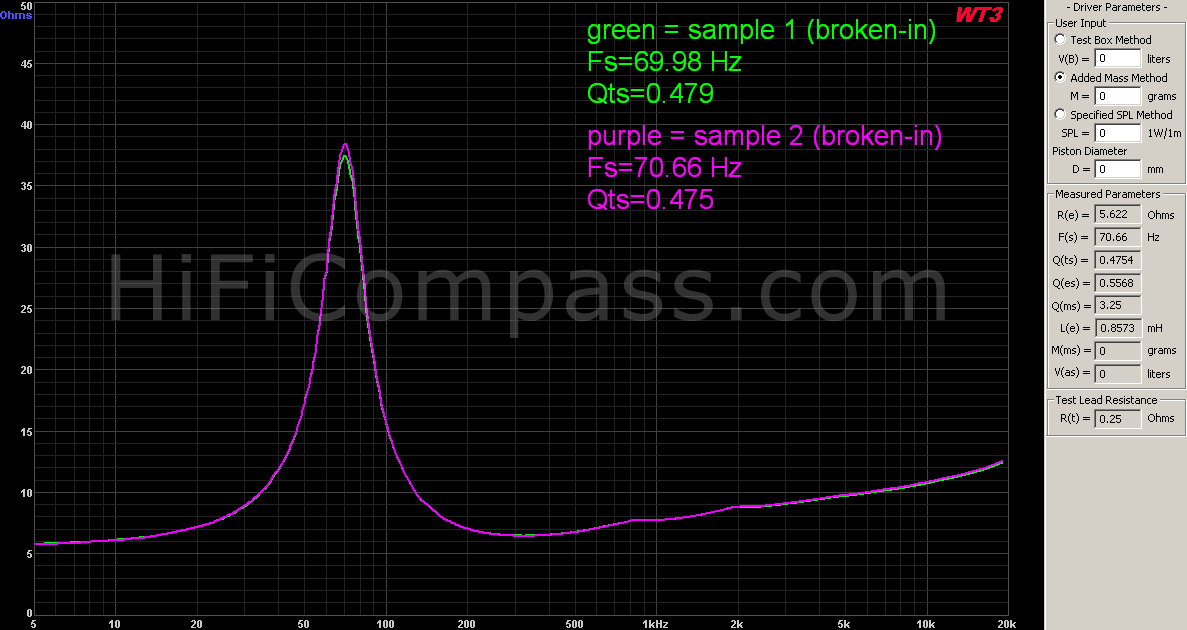 |
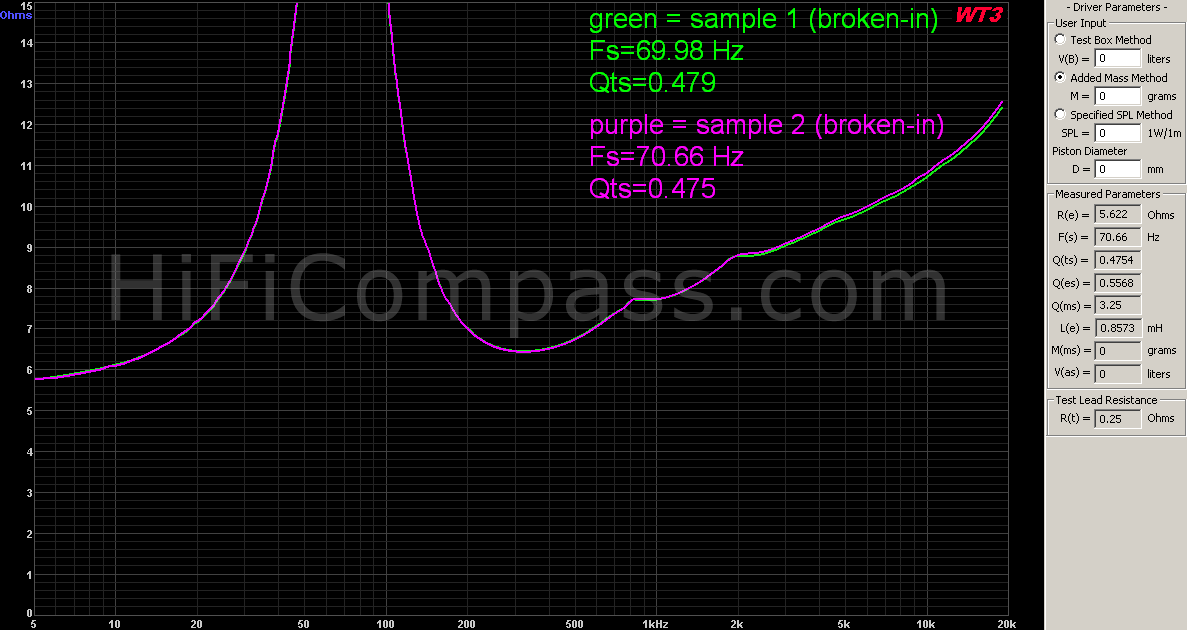 |
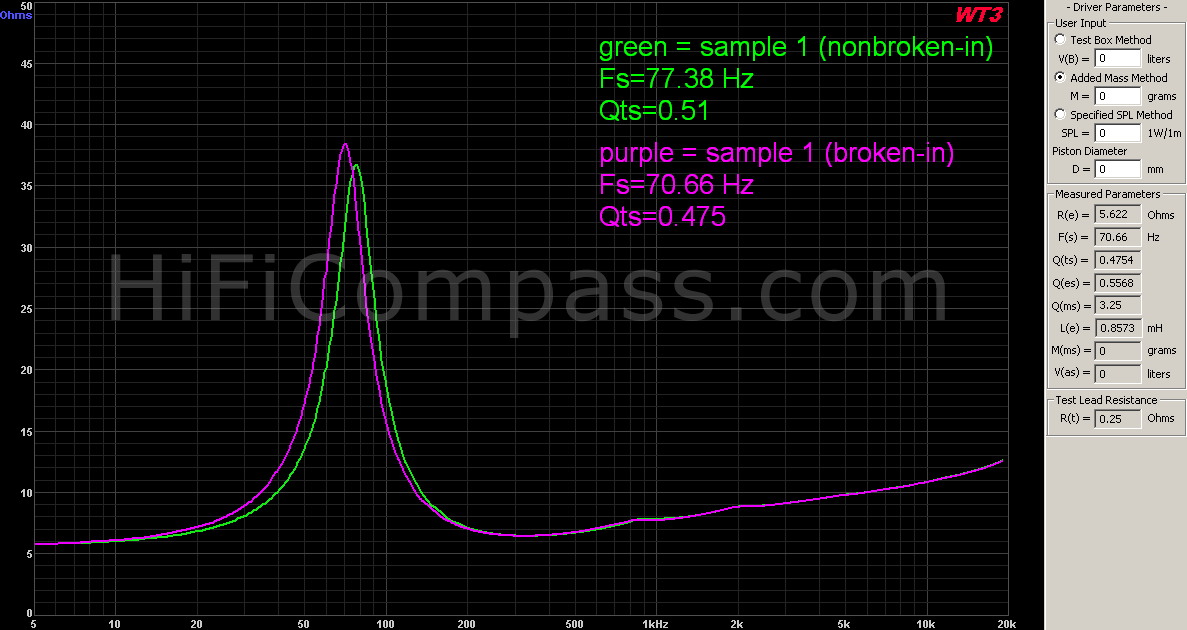 |
 |
The following parameters were obtained for the W12CY006 (E0091-08) midwoofer:
Fs=70.66 Hz (72 Hz in the datasheet)
Qts=0.475 (0.4 in the datasheet)
The resonant frequency almost coincided with the datasheet, but the total Q-factor turned out to be noticeably higher. Everything would be fine, but there is an interesting point - the measurements were carried out with the Dayton Audio WT3 tester in a small-signal mode (several tens of millivolts) and this was the measurement mode, which led to a significant discrepancy in the measured Thiele/Small parameters compared to the datasheet for the W18NX003 (E0096-08) midwoofer. After that, repeated Thiele/Small measurements for the W18NX003 in accordance with the manufacturer's recommendation at a higher voltage level of 2 Volts ensured full compliance with the datasheet. Well, let's see how the resonant frequency for the W12CY006 (E0091-08) will change depending on the voltage in the "manual" measurement mode using a generator and a voltmeter:
| Voltage, Volt | Resonant frequency Fs, Hz |
| 0.1 | 70 |
| 0.5 | 65 |
| 1 | 62 |
| 2 | 58 |
| 5 | 56 |
| 10 | 63 |
As you can see, at the manufacturer's recommended voltage of 2 Volts the resonant frequency drops to 58 Hz, and the expected Qts should be somewhere at the level of Qts=0.38, which is already much closer to the declared value of Qts=0.4. It seems to me that an error has crept into the datasheet, and if we correct the Fs parameter in it from 72 Hz to 58 Hz, then the Thiele/Small parameters measured according to the manufacturer's method will correspond to the datasheet.
Olav Mellum Arntzen:
Hi Yevgeniy,
We have found the cause for the difference in the f0 on the datasheet and the sample you have measured.
It is related to temperature, and the amount of run in. And as you say, it is really a good thing that the f0 is lower than expected.
We will not change the datasheet value at this point, but evaluate this with the next production runs, and then decide if we should correct this later.
Thanks to the excellent motor with a copper sleeve on the pole piece, the impedance has very low inductance and shows little rise with frequency. The response is very smooth, without pronounced resonances, but only with a slight waviness in the 800-200 Hz range, which is a typical behavior of soft membranes. This waviness is very insignificant and indicates excellent membrane damping.
The impedance response tells us about an excellent motor, very good balanced and damped moving system.
On-axis frequency response
Between 500-1100 Hz there is a slight smooth drop in frequency response by 1.5 dB, followed by a smooth rise up to 4.2 kHz. In fact, this drawdown is a slight manifestation of a well-damped edge resonance of the membrane.
According to my estimates, the average sensitivity in the range of 200-4000 Hz is approximately 83.5-84 dB, which is 1-1.5 dB below the datasheet value.
A more or less flat part of the frequency response extends right up to 14 kHz, while the membrane break-up mode is very well controlled. In general, in the range from 130 Hz to 14 kHz the total unevenness does not exceed +2/-2.5 dB, which is a very good achievement for a 4" paper cone speaker.
The frequency response does not imply any difficulties when designing a loudspeaker crossover. It is a pleasure to work with such a speaker.
The responses of the two samples are identical to each other over the entire range, which is especially remarkable and hard to achieve with paper cones!
It's strange, but the measured frequency response very differs from the datasheet. It is not good...
Off-axis frequency responses (315 mm)
Above are the plots of the regular and normalized off-axis frequency responses. For the normalized plot the axial frequency response is taken as the reference and the off-axis ones reflect only the difference with it. All curves are very smooth and fall off monotonically with angle and frequency. They do not reveal any hidden resonances.
Due to the discrepancy between the on-axis frequency response from the datasheet, the measured off-axis curves also do not correspond to it, although the general trend is very similar.
Harmonic distortion (315 mm)
Above are the harmonic distortions plots for the 2nd - 5th harmonics at average sound pressure levels of 84 and 99 dB (at voltages of 2.83 and 16 Volt respectively). To limit the speaker overload in terms of thermal power and membrane displacement when measuring harmonic distortion, a second-order Butterworth type high-pass filter with a cutoff frequency of 50 Hz was used at 2.83 V and 120 Hz at 16 V. On these graphs we analyze the frequency range only above 200 Hz.
The second harmonic dominates the entire frequency range and at all sound pressure levels. The third harmonic goes several dB lower, and the fourth and fifth even lower with a large margin. The harmonic distortion pattern is stable at both frequency and sound pressure. There are no sudden abrupt jumps in distortion over the entire range due to the membrane break-up, especially at high sound pressure level.
The bursts of the second harmonic up to 8-10 dB relative to the trend line are observed in the region of 720 Hz and 2.2 kHz. Most likely, they are associated with the loss of the membrane rigidity and the manifestation of the edge resonance.
I would rate the harmonic distortion above 200 Hz as "low".
Harmonic distortion (5mm - 20 mm)
The 2nd harmonic dominates in the range from 40-50 Hz up to 200 Hz. With decrease in frequency all harmonics increase monotonically, their behavior and hierarchy below 200 Hz are the same as above 200 Hz.
If we compare the harmonic distortion of the W12CY006 (E0091-08) with the previous model W12CY003 (E0044-8S), you will notice that the new model is significantly better in the range above 400 Hz, but for some reason is slightly inferior below. What is the reason, it is difficult for me to explain.
I would rate the harmonic distortion at low frequencies as "low".
Voice coil current harmonic distortion
This type of measurement, despite its simplicity, is an excellent tool for assessing the linearity of a speaker motor. The above plots show the frequency dependences of the 2nd, 3rd, 4th and 5th harmonics of the voice coil current at 2.83 and 8 Volt. To limit the speaker overload in terms of the membrane displacement when measuring harmonic distortion, a second-order Butterworth type high-pass filter with a cutoff frequency of 80 Hz was used.
Voice coil current nonlinearity is the direct nonlinearity of the mechanical force driving the speaker cone, since this force is related to the current by a simple relationship F=B*L*I, where B is the magnetic field strength, L is the length of the voice coil wire inside the magnetic gap and I is the current. So, in principle, it is practically impossible to obtain sound pressure distortion lower than current distortion in the frequency range where the contribution of the motional nonlinearity becomes insignificant.
The fourth and fifth harmonics above 100 Hz can be ignored, their level is very low and stable regardless of excitation. The second harmonic of the current at low voltages goes under the 3th one, but confidently outruns it when the voltage goes up. The 2nd harmonic linearly depends on the voltage level, as well as its manifestation in the sound pressure. Above 100 Hz the 3rd harmonic stays practically independent of the input voltage. Below 130 Hz, due to an increase in the membrane displacement amplitude, a sharp increase in harmonics of all orders begins.
Above 200 Hz the second harmonic grows almost linearly with the voltage level, the fourth is slightly faster, the third reacts about half as much to voltage as the second, but the fifth is almost still. Below 200 Hz, due to an increase in the membrane displacement amplitude, a sharp increase in harmonics of all orders begins.
I would rate the voice coil current harmonic distortion as "low".
Intermodulation distortion
The intermodulation distortion measurement is one of way of analyzing device non-linearity. It is not an alternative, but an additional method and allows you to identify the spectral components of the inharmonious structure, which are much more harmful for high-quality sound reproduction and to which our hearing is more sensitive.
- test frequencies
- 2nd order harmonic distortion components for the test frequencies (2nd HD)
- 3rd order harmonic distortion components for the test frequencies (3rd HD)
- 2nd order intermodulation distortion amplitude (IMA2)
- 3rd order intermodulation distortion amplitude (IMA3)
As you can see, just a couple of frequencies at the speaker terminals give rise to a whole forest of parasitic components at its output. The levels of second order intermodulation components are -30.55 dB and -28.9 dB for the cone excursions of 2 mm and 3 mm respectively.
The IMD measurements within the cone linear excursion range (according to the datasheet) turned out to be not as impressive as for the big brother W18NX003 (E0096-08), but quite good.
Step response
The step response exhibits excellent slew rate and smooth aperiodic decay. The decaying oscillations in the falling part of the response are due to the cone resonance in the 4.3 kHz region.
Waterfall
The waterfall shows the same effects as a step response, in addition exposing hidden resonances that are difficult to see in other types of measurements.
The waterfall of the W12CY006 (0091-08) is beautiful and one of the best I have ever seen with a 4'' midwoofer. Notice how quickly it fades. In the region up to 4 kHz the second slice is practically invisible, since it fades out by more than 20 dB. There are no long tails in the entire audio range and the small ones completely fade out after 2.5 ms. I'm sure this should definitely have a positive effect on the sonic performance.
Listening impressions
As usual, the logical completion of my measurement program is listening to the speaker in the test baffle in order to get the first subjective impressions about the character of the speaker sound. It is extremely difficult to describe the sound of the speaker driver in words, since there is no single generally accepted terminology. In addition, everyone hears and describes their feelings in different ways. Much depends on the accumulated experience of listening and the number of "sound prints" of various speakers stored in the head. It is no less difficult to understand, feel and imagine a sound described by someone. This requires that describing and imagining people are in the same coordinate system and have a common reference point.
I listened to the W12CY006 (E0091-08) mounted in a test baffle without any frequency response correction, i.e. as it is. Being familiar with many of SEAS paper cone midwoofers, I instantly recognized distinctive SEAS sounding - warm, soft, enveloping sound with a very sensuous midrange, moderately detailed and transparent. You want to wrap yourself up in it, like in a winter cold in a warm cashmere blanket. This sound cuts off all sharp corners and never hurts with any unexpected squeal. Smooth, flowing, velvety and natural. It is similar in character to the sound of the SEAS midwoofers with paper cones covered with a damping compound - CA12RCY, W12CY003. If my memory serves me, it sounds very close to the predecessor W12CY003 (E0044-08S). So, when upgrading the loudspeakers, in which the W12CY003 (E0044-08S) are installed, you can absolutely not worry about the risk of losing your familiar and favorite sound.
"How to use" recommendations
Considering the price and positioning of the midwoofer W12CY006 (E0091-08) by the manufacturer as one of their top-end ones, in my opinion, it would be optimal for it to be used as a midwoofer in ultra-compact 2-way loudspeakers and as a midrange in 3-way W-M-T, W-M-T-M-W and W-M-T-M configurations of the highest quality category. The maximum operating frequency is up to 3.5-4 kHz.
I did a litle simulation of the "closed box" and "bass reflex" designs in the VituixCAD miracle program using the Thiele/Small parameters from the datasheet - Fs=72 Hz, Qts=0.4, Vas=3 liters.
For the "closed box" design the maximum flat frequency response (Qtc = 0.707) is obtained in a volume of only 1.5 liters, while the lower cutoff frequency is 121.6 Hz at a level of minus 3 dB. The maximum sound pressure without overload at low frequencies is 95 dB.
What is the price and where to purchase it?
The W12CY006 (E0091-08) midwoofers are already on the market. The retail price is €218-290 per piece excluding VAT in Europe and around of $333 in the US.
It can be purchased in the following online stores:
- https://audio-hi.fi/ru/seas_e0091-08-p-5225.html
- https://www.madisoundspeakerstore.com/approx-4-woofers/seas-nextel-w12cy-006-e0091-nextel-cone-4.5-woofer/
Summary
The W12CY006 (E0091-08) got an improved moving and magnetic systems compared to its predecessor the W12CY003 (E0044-08S), which resulted in a more flat and smoother frequency response, as well as led to a decrease in the nonlinear distortions above 400 Hz. Below that frequency the situation has not changed fundamentally, here the predecessor demonstrates even a slightly better results.
The W12CY006 (E0091-08) inherited the proprietary SEAS sound character and the most meaningful electroacoustic parameters, therefore it can be considered as an upgrade of existing loudspeakers, which use the W12CY003 (E0044-08S), practically without modifying a crossover.
The consistancy of parameters and characteristics from one sample to another within the pair is excellent. The measured on- and off-axis frequency responses, as well as the Thiele/Small parameters differ with the datasheet.
Based on the measurements and listening results, I consider the W12CY006 (E0091-08) one of the best available 4" midwoofer on the market today, regardless of price. Of course, there are competitors with a lower price tag and better objective measurements, but how one can measure the sound? If you are an adherent of the warm, soft and melodious SEAS's sound, then it is difficult to find an alternative to this midwoofer.
Summarizing the above, I can highlight the following:
- The low averaged sensitivity, which is in the range of 83.5-84 dB/2.83 V*1 m
- Very smooth frequency response
- Low harmonic distortion throughout the entire frequency range
- Low intermodulation distortion
- It can be used up to 4 kHz
- Excellent waterfall
- The Thiele/Small parameters, on- and off-axis frequency responses don't match the datasheet
- Excellent manufacture quality
You can get more information about the measurement results here
Yevgeniy Kozhushko/16.08.2021
CONTACTS
- Ukraine
- (+380) 95 904 7827
- hificompass@gmail.com
LAST NEWS
-
04 Mar 2025
-
25 Feb 2025
-
10 Feb 2025
-
01 Feb 2025


